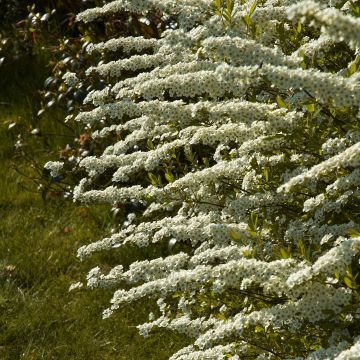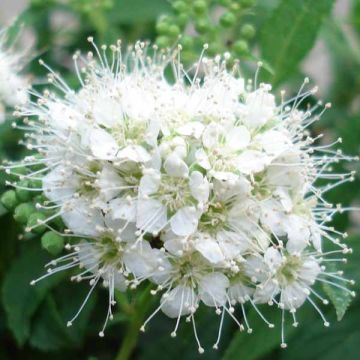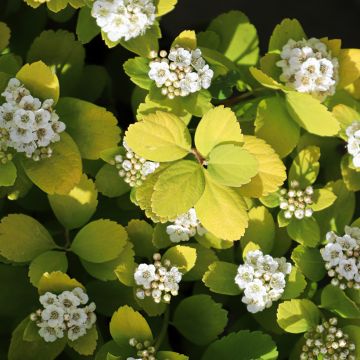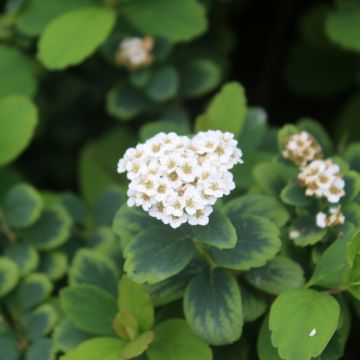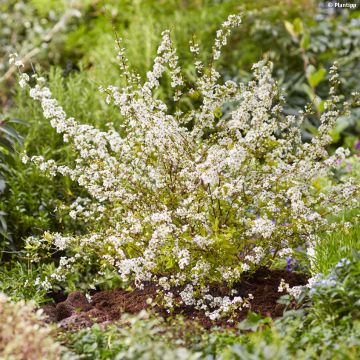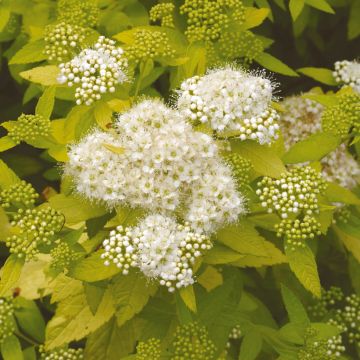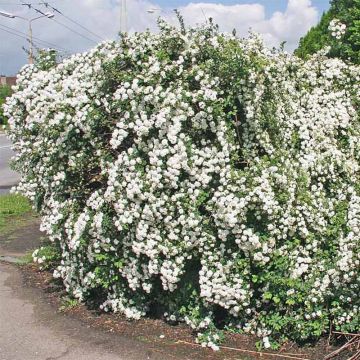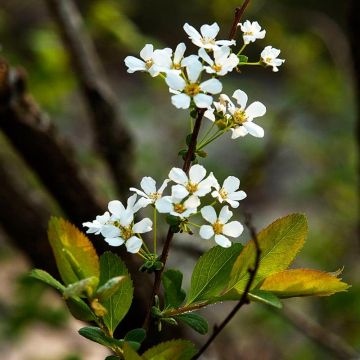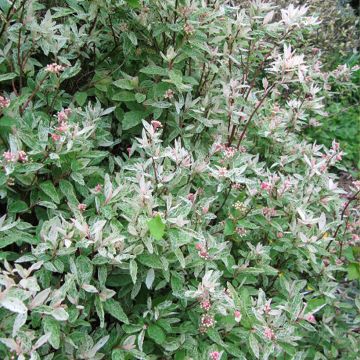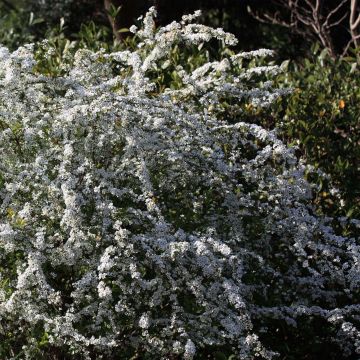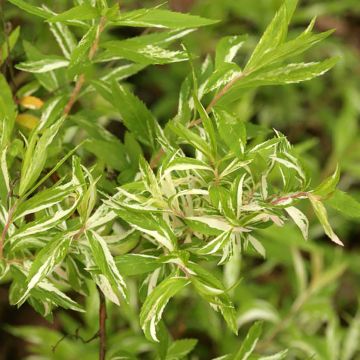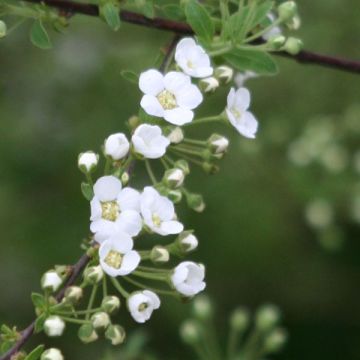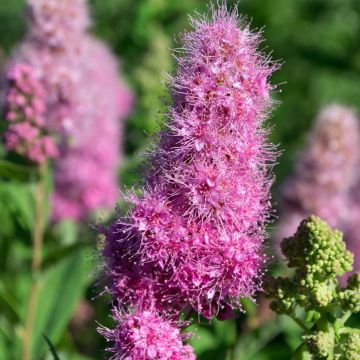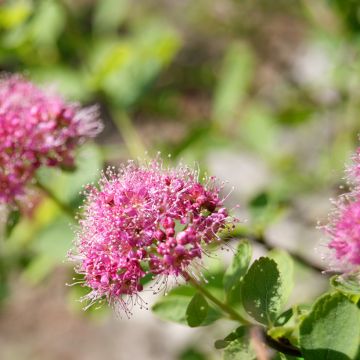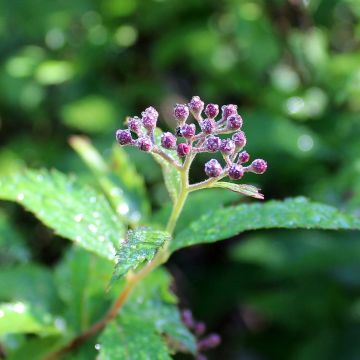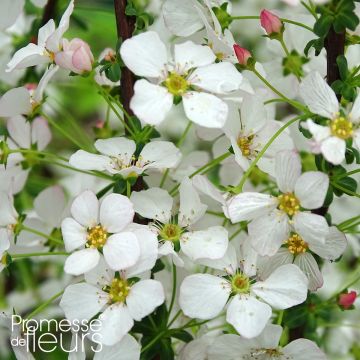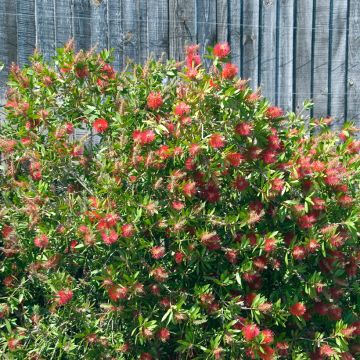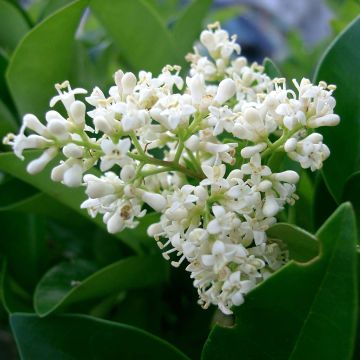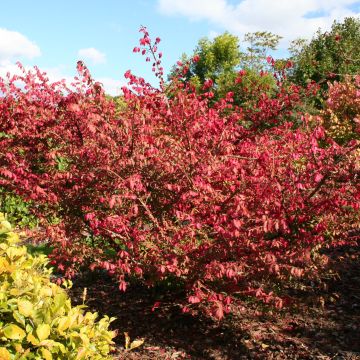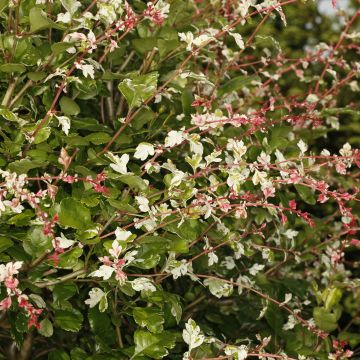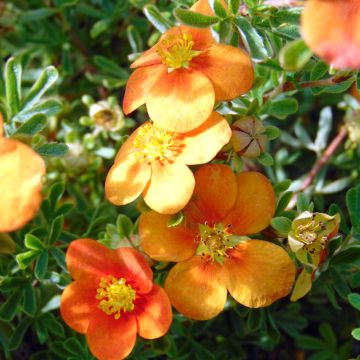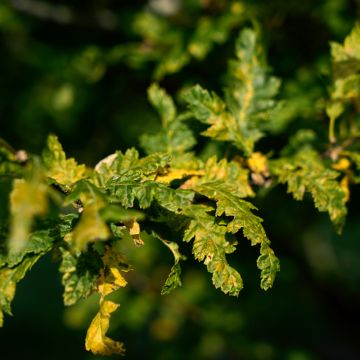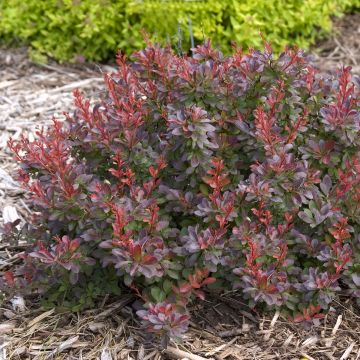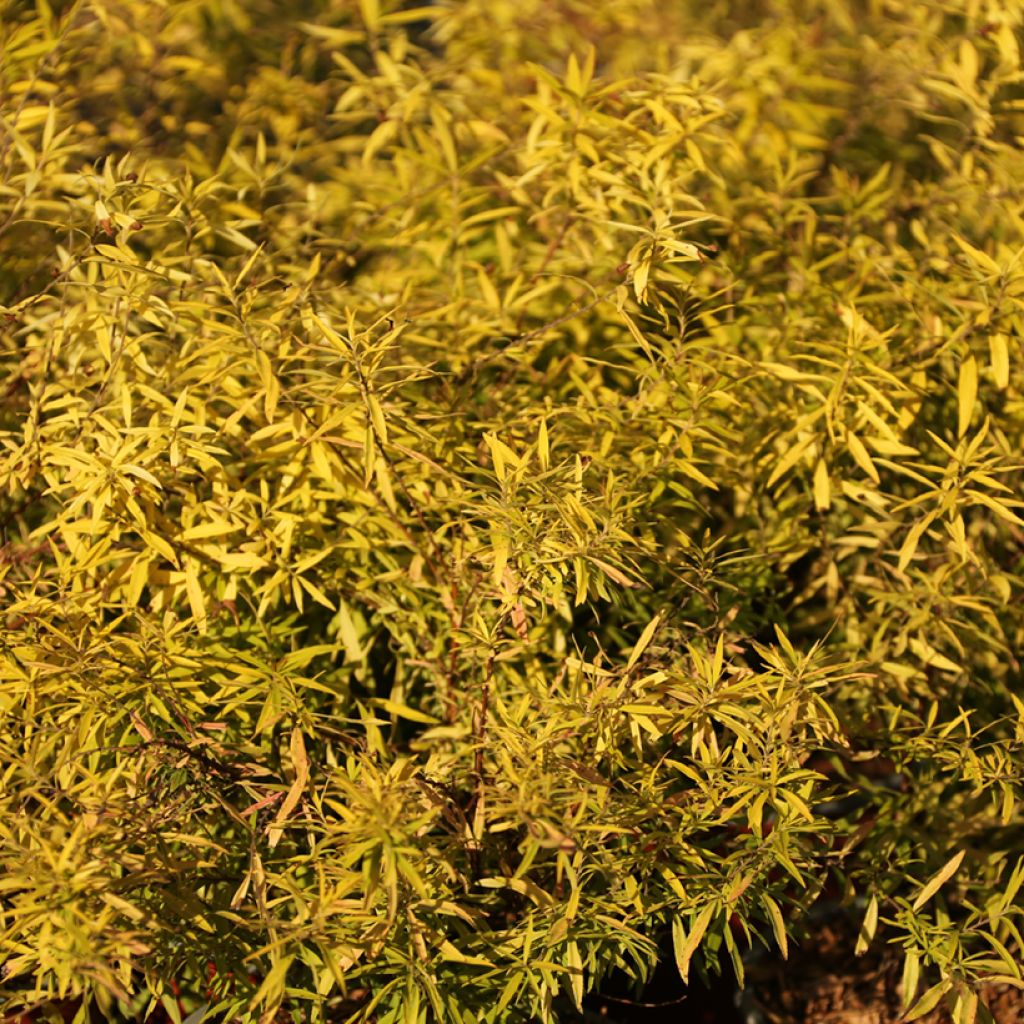

Spiraea thunbergii Ogon - Thunberg Spirea
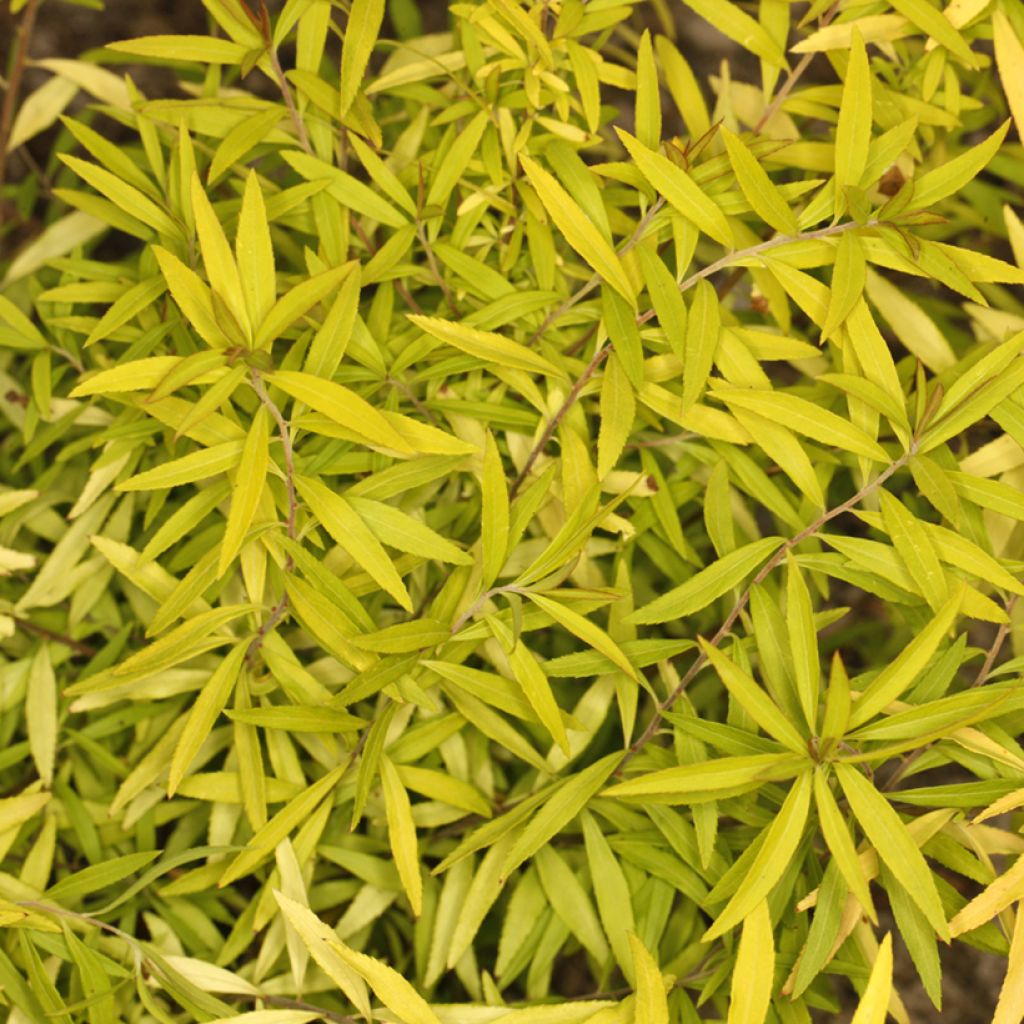

Spiraea thunbergii Ogon - Thunberg Spirea
Spiraea thunbergii Ogon - Thunberg Spirea
Spiraea thunbergii Ogon
Thunberg Spirea, Thunberg's Meadowsweet
Why not try an alternative variety in stock?
View all →This plant carries a 24 months recovery warranty
More information
We guarantee the quality of our plants for a full growing cycle, and will replace at our expense any plant that fails to recover under normal climatic and planting conditions.
From €5.90 for pickup delivery and €6.90 for home delivery
Express home delivery from €8.90.
Does this plant fit my garden?
Set up your Plantfit profile →
Description
Spiraea thunbergii 'Ogon' is a variety of Thunberg Spirea with a beautiful golden spring foliage that turns slightly green in summer. It has an elegant, bright foliage with a fine texture, reminiscent of willow leaves. From early spring, its slender and flexible branches are covered with small white flowers. In autumn, the shrub takes on shades of rust and pinkish orange. Plant it in isolation on a lawn, integrate it into a flower bed or even in a small flowering hedge.
Spiraea thunbergii 'Ogon' is a Japanese cultivar also sold under the names 'Mellow Yellow' or Gold Thread™. The species, Thunberg Spirea, nicknamed "baby's breath" by English speakers, is a very long-lived shrub native to China. It is a plant of the Rosaceae family. The 'Ogon' variety, with fairly rapid growth, develops slender, thin, flexible branches. Its habit is slightly arched, and the plant is generally wider than it is tall. Eventually, it will reach between 1m and 1.50m in height and 1.25m to 1.75m in spread. The abundant flowering takes place between late March and April, depending on the climate, shortly before the leaves appear. The white flowers with 5 petals, solitary or grouped in small clusters, appear along the previous year's branches. Spiraea thunbergii 'Ogon' has a dense, deciduous foliage in winter. Its leaves are thin, measuring 4cm long and 1.5cm wide. The soft textured leaves are coarsely toothed along the edges. The young leaves are bronze-copper, becoming yellow as they unfold, and then slightly tinged with green until late summer. In autumn, the foliage takes on beautiful shades of rust and pinkish orange. This shrub bears small fruits of no horticultural interest, but they are attractive and nourishing for birds.
The 'Ogon' Thunberg Spirea is a bright, elegant and colourful plant, and also one of the first spiraeas to bloom in spring. It can be planted in a large border or even in a small flowering hedge. To create a spring scene, it can be planted with a 'Raspberry Profusion' Abelia that blooms pink from May to October, a 'Jet Trail' Japanese Quince with abundant white flowers from March-April, or a Prunus x cistena which is also one of the first flowering shrubs. Add a white rose 'Irene of Denmark' that will take over until October. The 'Ogon' spirea is suitable for Japanese-style, English, naturalistic, rustic, romantic gardens... as well as small urban gardens.
Report an error about the product description
Spiraea thunbergii Ogon - Thunberg Spirea in pictures


Plant habit
Flowering
Foliage
Botanical data
Spiraea
thunbergii
Ogon
Rosaceae
Thunberg Spirea, Thunberg's Meadowsweet
Spiraea thunbergii 'Mellow Yellow', Gold Thread™
Cultivar or hybrid
Other Spiraea
Planting and care
Plant Spiraea thunbergii 'Ogon' in moist to slightly dry, deep, well-drained soil that is neutral to acidic or mildly alkaline (pH 6.5<pH<7.5). This low-maintenance bush thrives in full sun or partial shade, but its foliage will be more golden if the plant receives more sunlight. To maintain the vigour of the young plant, it is important to remove old branches at the base in spring. Prune lightly after flowering if necessary, cutting back faded shoots by half. This plant blooms on the previous year's branches. Apply a complete fertiliser every year in March.
Planting period
Intended location
Care
This item has not been reviewed yet - be the first to leave a review about it.
Hedge shrubs
Haven't found what you were looking for?
Hardiness is the lowest winter temperature a plant can endure without suffering serious damage or even dying. However, hardiness is affected by location (a sheltered area, such as a patio), protection (winter cover) and soil type (hardiness is improved by well-drained soil).

Photo Sharing Terms & Conditions
In order to encourage gardeners to interact and share their experiences, Promesse de fleurs offers various media enabling content to be uploaded onto its Site - in particular via the ‘Photo sharing’ module.
The User agrees to refrain from:
- Posting any content that is illegal, prejudicial, insulting, racist, inciteful to hatred, revisionist, contrary to public decency, that infringes on privacy or on the privacy rights of third parties, in particular the publicity rights of persons and goods, intellectual property rights, or the right to privacy.
- Submitting content on behalf of a third party;
- Impersonate the identity of a third party and/or publish any personal information about a third party;
In general, the User undertakes to refrain from any unethical behaviour.
All Content (in particular text, comments, files, images, photos, videos, creative works, etc.), which may be subject to property or intellectual property rights, image or other private rights, shall remain the property of the User, subject to the limited rights granted by the terms of the licence granted by Promesse de fleurs as stated below. Users are at liberty to publish or not to publish such Content on the Site, notably via the ‘Photo Sharing’ facility, and accept that this Content shall be made public and freely accessible, notably on the Internet.
Users further acknowledge, undertake to have ,and guarantee that they hold all necessary rights and permissions to publish such material on the Site, in particular with regard to the legislation in force pertaining to any privacy, property, intellectual property, image, or contractual rights, or rights of any other nature. By publishing such Content on the Site, Users acknowledge accepting full liability as publishers of the Content within the meaning of the law, and grant Promesse de fleurs, free of charge, an inclusive, worldwide licence for the said Content for the entire duration of its publication, including all reproduction, representation, up/downloading, displaying, performing, transmission, and storage rights.
Users also grant permission for their name to be linked to the Content and accept that this link may not always be made available.
By engaging in posting material, Users consent to their Content becoming automatically accessible on the Internet, in particular on other sites and/or blogs and/or web pages of the Promesse de fleurs site, including in particular social pages and the Promesse de fleurs catalogue.
Users may secure the removal of entrusted content free of charge by issuing a simple request via our contact form.
The flowering period indicated on our website applies to countries and regions located in USDA zone 8 (France, the United Kingdom, Ireland, the Netherlands, etc.)
It will vary according to where you live:
- In zones 9 to 10 (Italy, Spain, Greece, etc.), flowering will occur about 2 to 4 weeks earlier.
- In zones 6 to 7 (Germany, Poland, Slovenia, and lower mountainous regions), flowering will be delayed by 2 to 3 weeks.
- In zone 5 (Central Europe, Scandinavia), blooming will be delayed by 3 to 5 weeks.
In temperate climates, pruning of spring-flowering shrubs (forsythia, spireas, etc.) should be done just after flowering.
Pruning of summer-flowering shrubs (Indian Lilac, Perovskia, etc.) can be done in winter or spring.
In cold regions as well as with frost-sensitive plants, avoid pruning too early when severe frosts may still occur.
The planting period indicated on our website applies to countries and regions located in USDA zone 8 (France, United Kingdom, Ireland, Netherlands).
It will vary according to where you live:
- In Mediterranean zones (Marseille, Madrid, Milan, etc.), autumn and winter are the best planting periods.
- In continental zones (Strasbourg, Munich, Vienna, etc.), delay planting by 2 to 3 weeks in spring and bring it forward by 2 to 4 weeks in autumn.
- In mountainous regions (the Alps, Pyrenees, Carpathians, etc.), it is best to plant in late spring (May-June) or late summer (August-September).
The harvesting period indicated on our website applies to countries and regions in USDA zone 8 (France, England, Ireland, the Netherlands).
In colder areas (Scandinavia, Poland, Austria...) fruit and vegetable harvests are likely to be delayed by 3-4 weeks.
In warmer areas (Italy, Spain, Greece, etc.), harvesting will probably take place earlier, depending on weather conditions.
The sowing periods indicated on our website apply to countries and regions within USDA Zone 8 (France, UK, Ireland, Netherlands).
In colder areas (Scandinavia, Poland, Austria...), delay any outdoor sowing by 3-4 weeks, or sow under glass.
In warmer climes (Italy, Spain, Greece, etc.), bring outdoor sowing forward by a few weeks.



































